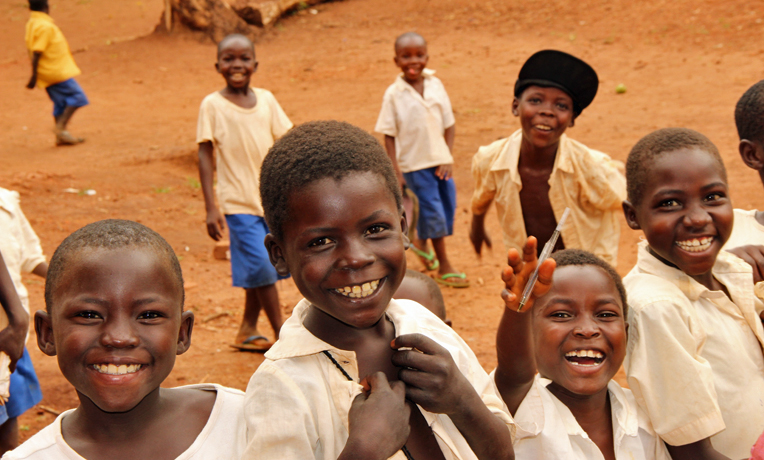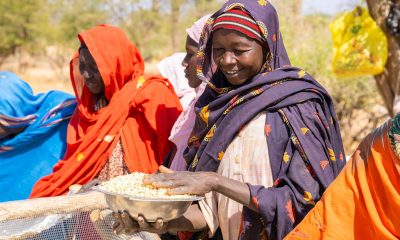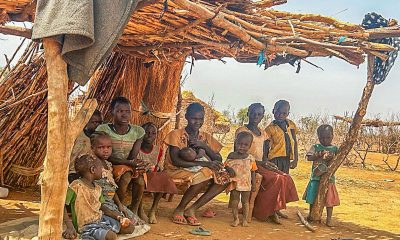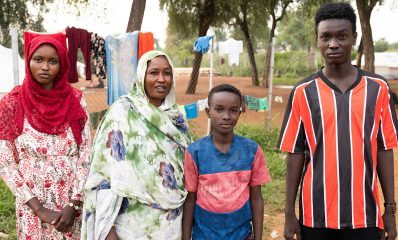By providing food for schoolchildren, Samaritan’s Purse is ensuring that boys and girls in the Democratic Republic of the Congo will receive the education they need.
Andrew Wester is a projects coordinator for Samaritan’s Purse in the Democratic Republic of the Congo.
The large, old truck rumbled and groaned as it struggled up the small hill to the school. There was probably a flood of prayers offered up between the 20 of us who sat in the back as we gripped tightly to the railing, hoping that the diesel engine still had the power to make it up even this small incline.
I glanced down as I felt the surface beneath me shift. Beneath our feet lay thousands of pounds of food, all stacked and ordered based on size, type, and where they were going to be delivered.

Children at this rural Congolese school are more likely to continue attending because they now receive a meal while there.
The engine was screaming in agony as it pressed forward, straining against the weight it carried. Finally, just before it appeared it was going to give in and let gravity pull it back down to the bottom, the front wheels crested the hill and grabbed what little traction they could.
Soon after, the middle and back wheels under the truck bed followed. Everyone started clapping and mocking the doubters, although it was just a show to build up their own courage. After all, this was just the first school of the day.
It was the beginning of April, and we were out delivering supplies provided by World Food Program. The meals are an incentive for the kids to keep coming to school if they know they will get at least one good meal a day. It’s especially important for critical areas where hunger and malnutrition are rampant. This is often the case in eastern Congo as rebel groups often force people to move and flee, resulting in little food security from gardens or even a consistent marketplace.
Samaritan’s Purse has partnered with the World Food Program to serve in two localities helping more than 100 schools. The remoteness of the Faradje/Aba territory where we work has resulted in the World Food Program giving us complete control over the warehouse and distribution of the food.
The distributions take place during the first two weeks of every month. At first it’s possible to do several deliveries a day. But once the schools get more removed from the warehouse, it takes longer to get to the locations, and the roads get worse. The deliveries during rainy season take twice as long because the dirt roads become rivers of mud where the trucks often get stuck.
Each school receives, in proportion to its size, bags of grain, vegetables, oil, and salt. They also receive items like cooking pots and plates at the beginning of the school year. Parents volunteer to do the cooking on different rotations. Although these meals are simple and repetitive, they provide the essential nutrients for the young children, and it’s often their only meal of the day.
The food helps students focus on their studies rather than their hunger. Samaritan’s Purse staff members are able to build relationships with the directors of the schools, spend time playing with the children and listening to their problems, and show the love of Jesus through their kindness and integrity.
As the truck summited the hill, we were welcomed by hundreds of kids running toward us. Each one was dressed in white-collared shirts and navy pants or skirts, the classic Congo school uniform. They knew that the truck meant another month of food, and a fan group formed to cheer on the men as they unloaded the supplies.
It was a gentle reminder that often the things we take for granted, like school cafeterias, security, and even education in general, are actually luxuries in other places.






